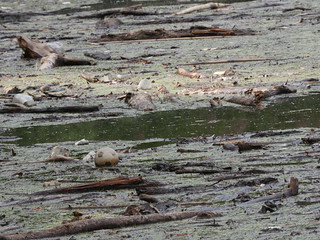Baltimore and Hyattsville Receive Grants to Address Flooding
Community Resiliency Grant Program Allocates $200,000
 The Maryland Department of Natural Resources will provide $100,000 Community Resiliency Grants to the cities of Baltimore and Hyattsville to support green infrastructure projects designed to mitigate the impact of flooding.
The Maryland Department of Natural Resources will provide $100,000 Community Resiliency Grants to the cities of Baltimore and Hyattsville to support green infrastructure projects designed to mitigate the impact of flooding.
“This grant program helps assure our inland communities are developing and implementing resiliency projects to address and prepare for extreme weather events, sea level rise and other threats,” Natural Resources Secretary Mark Belton said. “While primarily associated with coastal communities, building up ‘green infrastructure’ is a priority throughout the state.”
The award to the Baltimore City Department of Public Works will help find ways to reduce stormwater runoff in the city’s Cherry Hill neighborhood, where flooding has been a problem for more than a decade. The city is looking to implement a $6 million project to address a crushed storm drain line and implement green infrastructure projects throughout the community. The funding will help implement three additional projects to treat about 1.2 acres of impervious surface. The project will have a community outreach and education component for neighborhood residents.
The funding for Hyattsville will support a two-phase study to investigate flooding in the city’s Ward 1 neighborhood during periods of heavy rain and rapid snow melt. This study will engage local business owners, residents and other stakeholders in planning and taking action to improve local water quality and quantity, which could also yield best practice results for the state.
The grant program is organized into two tracks, both of which provide support for local communities: Track A (CoastSmart Communities) is for proposals aimed at understanding and planning for coastal hazards and Track B (Green Infrastructure Resiliency) is for proposals that address floodplain risks and stormwater, such as the grants for Baltimore and Hyattsville.
All grant applications are reviewed by a panel lead by the department’s Chesapeake and Coastal Service with assistance from the Chesapeake Bay Trust, University of Maryland Sea Grant Extension and University of Maryland Environmental Finance Center.
